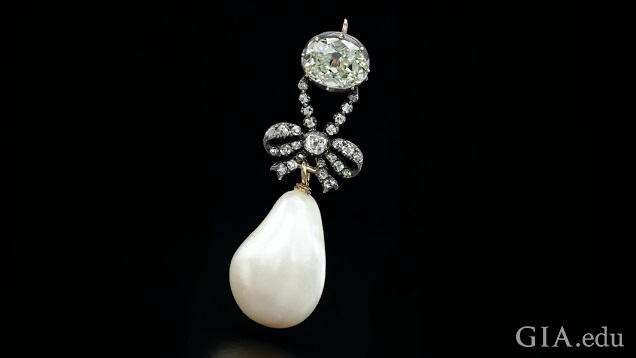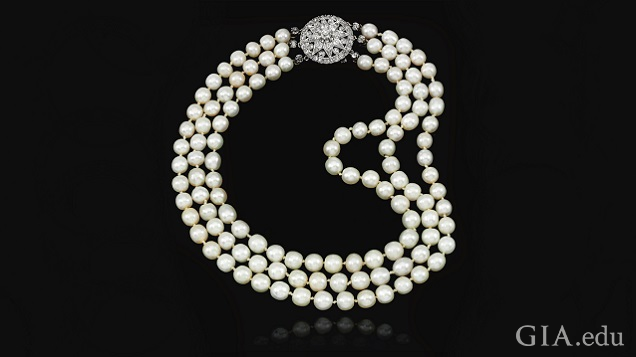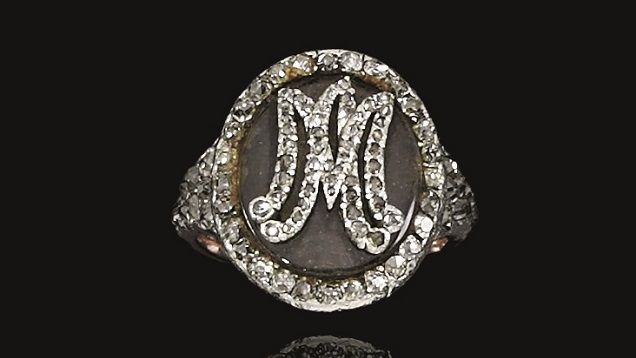Marie Antoinette’s Jewels: ‘How Can You Put a Price on Such History?’
December 7, 2018

As the French Revolution engulfed the nation in 1791, the uneasy arrangement that allowed French King Louis XVI and his wife Marie Antoinette to remain on the throne began to unravel, and the royal family prepared to flee into exile.
In March, Marie Antoinette entrusted her favorite jewels to a loyal retainer, Count Mercy Argentau, who packed them into a wooden chest and spirited them to Brussels for safe keeping. By the end of June, King Louis XVI and Marie Antoinette were imprisoned and her jewels – natural pearls and diamonds – were on a tortuous journey from Brussels to Austria and finally Parma in northern Italy where they would remain for over two centuries. Until 2018.
Ten of those pieces belonging to the French queen, along with 90 other jewels from the Bourbon-Parma royal family, brought astounding prices at Sotheby’s Nov. 14 Geneva auction. Valued at $7 million before the sale, the extraordinary history and provenance of the collection sent bids soaring to a total of $53 million.
Daniela Mascetti, deputy chairman of Sotheby’s Jewelry Europe and senior international specialist, said it was one of the most important royal jewelry collections ever to appear in the market. “Every piece is imbued with history,” she said. “They offer captivating insight into the lives of their owners going back hundreds of years.”
“No one knew of this collection’s existence for a century or more, apart from the family. [They] contacted us 10 years ago about selling the collection, but we had to do much research on every piece before any of them could be put up for sale.”
- Olivier Wagner, senior specialist at Sotheby’s
The signature piece (lot 100) was Marie Antoinette’s natural pearl and diamond drop pendant featuring a slightly baroque drop pearl (15.90 x 18.35 x 25.85 mm) probably from the Persian Gulf, attached below a diamond-set bow with an oval cut diamond of about 5 carats. According to a 1907 inventory of the collection, the pendant was a parure originally suspended from a three-strand pearl necklace owned by Marie Antoinette, but offered separately at this auction.
David Bennett, chairman of Sotheby’s international jewelry division, began the auction of the pendant at 900,000 Swiss francs. Bidding proceeded methodically up to 6.5 million francs, then quickly escalated past 30 million to the final bid of 32 million, where he brought the hammer down to the applause of the room. The winner, noted as a private European buyer, paid a total price of 36 million francs ($36.1 million), after the auction house commission. (At the time of the auction, the U.S. dollar and Swiss franc were nearly equal.)

The three-strand necklace the pendant had been attached to (lot 97) started at 160,000 francs, half the pre-sale estimate. Again, bidding proceeded slowly until the 1 million franc mark, when it picked up and quickly reached 1.9 million francs when Bennett lowered his hammer.
One of the most personal items in the collection was a small ring containing a lock of Marie Antoinette’s hair, with her initials MA in small rose cut diamonds. The pre-sale estimate of 8,000-10,000 Swiss francs was surpassed within a few seconds of the opening and escalated rapidly to over 447,000 francs before closing. Also, a ring with a miniature portrait of Marie Antoinette in profile framed by small, round-cut diamonds, sold for 250,000 francs against a pre-sale estimate of 8,000 to 10,000 francs.
The 10 pieces from Marie Antoinette’s collection sold for 43.1 million francs, against a pre-sale estimate of 1.6 million francs.
A week before the sale, Mascetti explained that the estimates were based on the values of the pieces without their history. “How can you put a price on such history? It’s impossible to have a true estimate,” she noted with a shrug.
Although the jewels were centuries old, there was no doubt about their provenance, said Olivier Wagner, senior specialist in the auction house’s Geneva branch. The collection was in the hands of an Italian family, descendants of the Parma-Bourbon royal houses, which had branches in France, Spain, Austria. Sotheby’s spent a full decade tracing the lineage of each of the 100 lots in the auction.
“No one knew of this collection’s existence for a century or more, apart from the family,” he said. “The family contacted us 10 years ago about selling the collection, but we had to do much research on every piece before any of them could be put up for sale.” The family kept extensive paperwork in the form of inventories and bequests but some pieces had been altered or broken up completely with the diamonds being set into newer jewels.

The research was often difficult and complex because of the complicated lineage of European royal families, and tracing the paths of gems after the pieces had been altered, Wagner explained
The signature piece, the $36 million parure natural pearl and diamond pendant, for example, went to her eldest and only surviving daughter, Marie Therese’ (1778-1851), who was imprisoned with her other family members on Aug. 13, 1792. During her three years of captivity, her father, Louis XVI was executed Jan. 21, 1793, and her mother, Marie Antoinette was led to the guillotine on Oct. 16, 1793.
Marie Therese was released from prison in December of 1795, just as she turned 17 years old, and was taken to Vienna. While she lived in other European capitals through much of her life, her jewels, including those she inherited from her mother, remained on deposit in the Imperial Treasury of Vienna.
After she died in 1851, she left one-third of her jewels, including the pendant, to her niece, Louise de Bourbon-Parma the Duchess of Parma, in what is now Italy. The will stated that her jewelry collection would be divided between her nieces and nephew: Louise, Marie Therese and Henri.
At that time, Italy was in upheaval with the armies of King Victor Emmanuel battling to form the various principalities into a unified nation, causing Louise de Bourbon-Parma to flee to Venice with the collection of jewels. After Louise died in 1864, the jewels were passed to her children, then through their descendants, until 1907 when Prince Elie de Bourbon-Parma ordered a full inventory, including photographs of each piece. By this time, an approximately five carat oval cut diamond had been attached to the top of Marie Antoinette’s pearl pendant and the collection had grown considerably from pieces belonging to other branches of the family.
These other pieces also sold well above their pre-sale estimates:
- A fleur de lis diamond tiara, which by Vienna jeweler Hubner created in 1912 from diamonds that belonged to Charles X of France (1757-1836), sold for 975,000 francs, about double its pre-sale estimate.
- A diamond and emerald badge of the Order of the Saint-Esprit, which belonged to Louis-Antoine de Bourbon (1775-1844), Duc of Angouleme, realized a price of 1.6 million francs against a pre-sale estimate of 100,000 to 150,000 francs.
- A ruby and diamond bow brooch, given by Archduke Frederic of Austria (1856-1936) to his daughter Anne Marie in 1909, realized 375,000 francs against a pre-sale estimate of 200,000 to 300,000 francs.
- A 2.44 ct Fancy orangy pink diamond, owned by the Archduke, graded by GIA, sold for 579,000 francs, four times its pre-sale estimate.
Coincidentally, a 24.04 ct Fancy yellow diamond named the Moon of Baroda, which had been in the collection of Marie Therese of Vienna (1717-1780), went up for auction at Christie's in Hong Kong on Nov 27. Marilyn Monroe wore this diamond when she was publicizing the film “Gentlemen Prefer Blondes.” It sold for $1.3 million, almost double its pre-sale estimate.
Why did the owner want to sell this historic collection?
“It’s a question Sotheby’s never asks its clients. We feel it’s an intrusion,” Mascetti explained. “Usually they volunteer this information only when selling their pieces for charity.”
As the will of Marie Antoinette’s daughter stated, the majority of the queen’s jewels went to other members of this extended family, so there is the enticing possibility that additional treasures may reach the market.
Of the possibility that Sotheby’s may be planning another sale in the future, Mascetti smiled and replied: “We cannot say.”
Russell Shor is senior industry analyst at GIA in Carlsbad.



